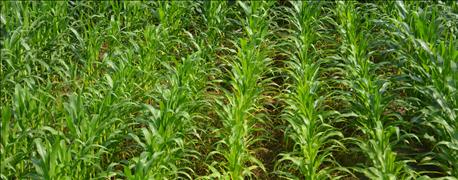
A perfect storm of conditions may have set the stage for clogged tiles and related drainage issues in some fields this spring. Cover crop roots growing deeper than normal apparently contributed to clogging tiles, but many believe they weren’t the only cause of drainage issues in tile systems that worked previously.
Shannon Zezula, state resource conservationist with the Natural Resources Conservation Service, acknowledges that this past spring, some farmers reported plugged drainage tile with cover crop roots in them. Zezula says many farmers, tile contractors, researchers and NRCS experts are evaluating why this happened and looking for solutions to minimize future occurrences.

POOR DRAINAGE: Clogged tile lines led to wet spots like this one this year.
Here is what they have found so far, Zezula notes. First, not every cover crop field with tile had issues, so that’s great news for those who believe in the power of cover crops.
Many farmers and tile contractors alike think the plugged locations had pre-existing tile issues, and the weather conditions allowed cover crop roots to proliferate and expose these issues. Zezula believes the benefits of cover crops still outweigh the risks of plugged tile in one season. One of the reasons to plant cover crops is to get deep rooting that will help the cash crop.
Why lines plugged
Eileen Kladivko, Purdue University researcher, says one theory is that the mild winter and warm spring allowed cover crops to get larger and their roots to grow deeper than in other years. She and others also point out that cover crop roots weren’t the only contributor to plugged tiles in some fields.
The speculation is that heavy rains may have washed more dirt and residue into riser pipes, often installed to collect water in water and sediment control basins, than in a normal year. Besides contributing to plugging tile lines, this dirt and residue mix, once inside tile lines, provided an excellent environment for roots to grow once they reached the tile.
Solutions to minimize this occurrence in the future, especially if tile installation or conditions are conducive to root proliferation, may include seeding cover crops later or terminating earlier, Zezula says. At least some of the problems this spring were reported by farmers trying cereal rye for the first time. Once the spring turned wet, it was difficult to terminate the cover crop before it grew very large on top, with roots growing very deep under the surface.
Minimize issues
Terminating cover crops earlier when possible would keep roots from going so deep. Zezula says another option is to select cover crops that don’t root as deep.
Kladivko wants to know if you had problems with roots growing into tile this year. She says it will help her and others track patterns that may have led to these issues, and develop recommendations that can help minimize the issue in the future. Email her at [email protected].
For more information about this issue, check out this Purdue Extension link on tiles and cover crop roots.
About the Author(s)
You May Also Like




